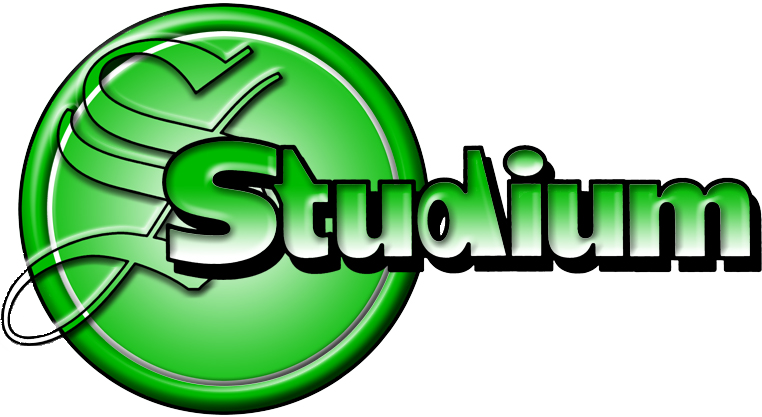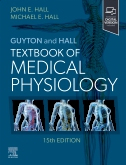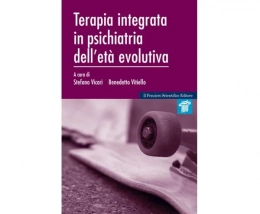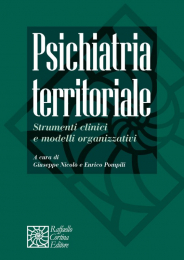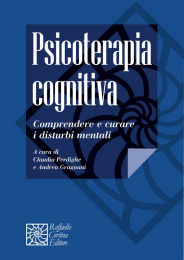Non ci sono recensioni
DA SCONTARE
| **Selected for 2025 Doody’s Core Titles® with "Essential Purchase" designation in Physiology** A favorite text of physiology students worldwide, Guyton and Hall Textbook of Medical Physiology delivers the complex knowledge you need to master in a distinctive, easy-to-digest format. The fifteenth Edition of this bestselling text is fully up to date and provides clear, comprehensive coverage of the content most relevant to clinical and pre-clinical students. The unique format ensures maximum learning and retention of complex concepts: a larger font size emphasizes core information, while supporting information is detailed in a smaller font and highlighted in pale blue—making it easy to quickly skim the essential text or pursue more in-depth study. |
| Features: |
|
UNIT I Introduction to Physiology: The Cell and General Physiology
1. Functional Organization of the Human Body and Control of the “Internal Environment”
Cells Are the Living Units of the Body
Extracellular Fluid—The “Internal Environment”
Homeostasis—Maintenance of a Stable Internal Environment
Control Systems of the Body
Physiological Variability
Sex Differences in Physiology and Pathophysiology
Summary—Automaticity of the Body
2. The Cell and Its Functions
Organization of the Cell
Cell Structure
Functional Systems of the Cell
Locomotion of Cells
3. Genetic Control of Protein Synthesis, Cell Function, and Cell Reproduction
Cell Nucleus Genes Control Protein Synthesis
Transcription—Transfer of Cell Nucleus DNA Code to Cytoplasm RNA Code
Translation—Formation of Proteins on the Ribosomes
Protein Enzymes Control Synthesis of Other Substances in the Cell
Regulation of Gene Function and Biochemical Activity in Cells
The DNA–Genetic System Controls Cell Reproduction
Cell Differentiation
Apoptosis—Programmed Cell Death
Cancer
UNIT II Membrane Physiology, Nerve, and Muscle
4. Transport of Substances Through Cell Membranes
The Cell Membrane Is a Lipid Bilayer With Cell Membrane Transport Proteins
Diffusion
Active Transport of Substances Through Membranes
5. Membrane Potentials and Action Potentials
Basic Physics of Membrane Potentials
Resting Membrane Potential of Neurons
Neuron Action Potential
Propagation of the Action Potential
Importance of Energy Metabolism for Reestablishing Sodium and Potassium Ionic Gradients After Action Potentials Are Completed
Plateau in Some Action Potentials
Rhythmicity of Some Excitable Tissues—Repetitive Discharge
Special Characteristics of Signal Transmission in Nerve Trunks
Excitation—The Process of Eliciting the Action Potential
6. Contraction of Skeletal Muscle
Physiological Anatomy of Skeletal Muscle
General Mechanism of Muscle Contraction
Molecular Mechanisms of Muscle Contraction
Energetics of Muscle Contraction
Characteristics of Whole Muscle Contraction
7. Excitation of Skeletal Muscle: Neuromuscular Transmission and Excitation-Contraction Coupling
Neuromuscular Junction and Transmission of Impulses From Nerve Endings to Skeletal Muscle Fibers
Muscle Action Potential
Excitation-Contraction Coupling
8. Excitation and Contraction of Smooth Muscle
Contraction of Smooth Muscle
Regulation of Contraction By Calcium Ions
Nervous and Hormonal Control of Smooth Muscle Contraction
UNIT III: The Heart
9. Cardiac Muscle; The Heart as a Pump and Function of the Heart Valves
Cardiac Muscle Physiology
The Cardiac Cycle
Regulation of Heart Pumping
10. Rhythmical Excitation of the Heart
Specialized Excitatory and Conductive System of the Heart
Control of Excitation and Conduction in the Heart
11. Fundamentals of Electrocardiography
Waveforms of the Normal Electrocardiogram
Flow of Current Around the Heart During the Cardiac Cycle
Electrocardiographic Leads
12. Electrocardiographic Interpretation of Cardiac Muscle and Coronary Blood Flow Abnormalities: Vectorial Analysis
Vectorial Analysis of Electrocardiograms
Vectorial Analysis of the Normal Electrocardiogram
Mean Electrical Axis of the Ventricular QRS and Its Significance
Conditions That Cause Abnormal Voltages of the QRS Complex
Prolonged and Bizarre Patterns of the QRS Complex
Current of Injury on the Electrocardiogram
Abnormalities in the T Wave
13. Cardiac Arrhythmias and Their Electrocardiographic Interpretation
Abnormal Sinus Rhythms
Heart Block Within the Intracardiac Conduction Pathways
Premature Contractions
Paroxysmal Tachycardia
Ventricular Fibrillation
Atrial Fibrillation
Atrial Flutter
Cardiac Arrest
UNIT IV: The Circulation
14. Overview of the Circulation: Pressure, Flow, and Resistance
Physical Characteristics of the Circulation
Basic Principles of Circulatory Function
Interrelationships of Pressure, Flow, and Resistance
15. Vascular Distensibility and Functions of the Arterial and Venous Systems
Vascular Distensibility
Arterial Pressure Pulsations
Veins and Their Functions
16. The Microcirculation and Lymphatic System: Capillary Fluid Exchange, Interstitial Fluid, and Lymph Flow
Structure of the Microcirculation and Capillary System
Vasomotion Causes Intermittent Capillary Blood Flow
Exchange of Substances Between the Blood and Interstitial Fluid
Interstitium and Interstitial Fluid
Fluid Filtration Across Capillaries
Lymphatic System
17. Local and Humoral Control of Tissue Blood Flow
Local Blood Flow Is Controlled in Response to Tissue Needs
Mechanisms of Local Blood Flow Control
Humoral Control of the Circulation
18. Nervous Regulation of the Circulation and Rapid Control of Arterial Pressure
Nervous Regulation of the Circulation
Special Features of Nervous Control of Arterial Pressure
19. Role of the Kidneys in Long-Term Control of Arterial Pressure and in Hypertension: The Integrated System for Arterial Pressure Regulation
Renal–Body Fluid System for Arterial Pressure Control
Role of the Renin-Angiotensin System in Arterial Pressure Control
Summary of Integrated Multifaceted Systems for Arterial Pressure Regulation
20. Cardiac Output, Venous Return, and Their Regulation
Normal Values for Cardiac Output at Rest and During Activity
Control of Cardiac Output By Venous Return—Frank-Starling Mechanism of the Heart
Methods for Measuring Cardiac Output
21. Muscle Blood Flow and Cardiac Output During Exercise; The Coronary Circulation and Ischemic Heart Disease
Blood Flow Regulation in Skeletal Muscle at Rest and During Exercise
Coronary Circulation
22. Heart Failure
Circulatory Dynamics in Heart Failure
Unilateral Left Heart Failure
Low-Output Cardiac Failure—Cardiogenic Shock
Edema in Patients With Heart Failure
Cardiac Reserve
Quantitative Graphic Analysis of Cardiac Failure
Heart Failure With Preserved Ejection Fraction
High-Output Heart Failure
23. Heart Valves and Heart Sounds; Valvular and Congenital Heart Defects
Heart Sounds
Abnormal Circulatory Dynamics in Valvular Heart Disease
Abnormal Circulatory Dynamics in Congenital Heart Defects
Use of Extracorporeal Circulation During Cardiac Surgery
Hypertrophy of the Heart in Valvular and Congenital Heart Disease
24. Circulatory Shock and Its Treatment
Physiological Causes of Shock
Hypovolemic Shock Due to Hemorrhage
Distributive Shock Is Characterized By Severe Peripheral Vasodilation
Obstructive Shock Is Usually Due to Noncardiac Causes of Reduced Cardiac Output
Physiology of Treatment in Shock
Circulatory Arrest
UNIT V: The Body Fluids and Kidneys
25. Regulation of Body Fluid Compartments: Extracellular and Intracellular Fluids; Edema
Intake and Output of Fluids and Solutes Are Balanced During Long-Term Steady-State Conditions
Body Fluid Compartments
Constituents of Extracellular and Intracellular Fluids
Measurement of Body Fluid Component Volumes—Indicator-Dilution Principle
Fluid Exchange and Osmotic Equilibrium Between Intracellular and Extracellular Fluid
Volume and Osmolality of Extracellular and Intracellular Fluids in Abnormal States
Glucose and Other Solutions Administered for Nutritive Purposes
Clinical Abnormalities of Fluid Volume Regulation: Hyponatremia and Hypernatremia
Edema: Excess Fluid in the Tissues
Fluids in Potential Spaces of the Body
26. The Urinary System: Functional Anatomy and Urine Formation By the Kidneys
Multiple Functions of the Kidneys
Physiological Anatomy of the Kidneys
Urine Formation Results From Glomerular Filtration, Tubular Reabsorption, and Tubular Secretion
Micturition
27. Glomerular Filtration, Renal Blood Flow, and Their Control
Glomerular Filtration—The First Step in Urine Formation
Determinants of GFR
Renal Blood Flow
Physiological Control of GFR and Renal Blood Flow
Autoregulation of GFR and Renal Blood Flow
28. Renal Tubular Reabsorption and Secretion
Tubular Reabsorption Is Quantitatively Large and Highly Selective
Tubular Reabsorption Includes Passive and Active Mechanisms
Reabsorption and Secretion Along Different Parts of the Nephron
Regulation of Tubular Reabsorption
Use of Clearance Methods to Quantify Kidney Function
29. Urine Concentration and Dilution; Regulation of Extracellular Fluid Osmolarity and Sodium Concentration
Kidneys Excrete Excess Water By Forming Dilute Urine
Kidneys Conserve Water By Excreting Concentrated Urine
Countercurrent Multiplier Mechanism
Control of Extracellular Fluid Osmolarity and Sodium Concentration
30. Renal Regulation of Potassium, Calcium, Phosphate, and Magnesium; Integration of Renal Mechanisms for Control of Blood Volume and Extracellular Fluid Volume
Regulation of Internal Potassium Distribution
Regulation of Renal Potassium Excretion
Regulation of Renal Calcium Excretion and Extracellular Calcium Ion Concentration
Regulation of Renal Phosphate Excretion
Regulation of Renal Magnesium Excretion and Extracellular Magnesium Ion Concentration
Integration of Renal Mechanisms for Control of Extracellular Fluid
Distribution of Extracellular Fluid Between Interstitial Spaces and Vascular System
Nervous and Hormonal Factors Increase Effectiveness of Renal–Body Fluid Feedback Control
Integrated Responses to Changes in Sodium Intake
Conditions That Cause Large Increases in Blood Volume and Extracellular Fluid Volume
Conditions That Cause Large Increases in Extracellular Fluid Volume With Normal or Reduced Blood Volume
31. Acid–Base Regulation
Hydrogen Ion Concentration Is Precisely Regulated
Acids and Bases—Definitions and Meanings
Defending Against Changes in H+ Concentration: Buffers, Lungs, and Kidneys
Buffering of H+ in the Body Fluids
Bicarbonate Buffer System
Phosphate Buffer System
Proteins Are Important Intracellular Buffers
Respiratory Regulation of Acid–Base Balance
Renal Control of Acid–Base Balance
Secretion of H+ and Reabsorption of HCO3− By the Renal Tubules
Combination of Excess H+ With Phosphate and Ammonia Buffers in the Tubule Generates “New” HCO3−
Quantifying Renal Acid–Base Excretion
Regulation of Renal Tubular H+ Secretion
Renal Correction of Acidosis—Increased Excretion of H+ and Addition of HCO3− to the Extracellular Fluid
Renal Correction of Alkalosis—Decreased Tubular Secretion of H+ and Increased Excretion of HCO3−
32. Diuretics and Kidney Diseases
Diuretics and Their Mechanisms of Action
Kidney Diseases
Acute Kidney Injury
CKD Is Often Associated With Irreversible Loss of Functional Nephrons
UNIT VI: Blood Cells, Immunity, and Blood Coagulation
33. Red Blood Cells, Anemia, and Polycythemia
Red Blood Cells (Erythrocytes)
Iron Metabolism
Anemias
Polycythemia
34. Resistance of the Body to Infection: I. Leukocytes, Granulocytes, the Monocyte-Macrophage System, and Inflammation
Leukocytes (White Blood Cells)
Neutrophils and Macrophages Defend Against Infections
Monocyte-Macrophage Cell System (Reticuloendothelial System)
Inflammation: Role of Neutrophils and Macrophages
Eosinophils
Basophils
Leukopenia
Leukemias
35. Resistance of the Body to Infection: II. Immunity and Allergy
Acquired (Adaptive) Immunity
Allergy and Hypersensitivity
Sex Differences in Innate and Adaptive Immunity
36. Blood Types, Transfusion, and Tissue and Organ Transplantation
Antigenicity Causes Immune Reactions of Blood
O-A-B Blood Types
Rh Blood Types
Transfusion Reactions Resulting From Mismatched Blood Types
Transplantation of Tissues and Organs
37. Hemostasis and Blood Coagulation
Hemostasis Events
Mechanism of Blood Coagulation
Conditions That Cause Excessive Bleeding in Humans
Thromboembolic Conditions
Anticoagulants for Clinical Use
Blood Coagulation Tests
UNIT VII: Respiration
38. Pulmonary Ventilation
Mechanics of Pulmonary Ventilation
Pulmonary Volumes and Capacities
Alveolar Ventilation
39. Pulmonary Circulation, Pulmonary Edema, and Pleural Fluid
Physiological Anatomy of the Pulmonary Circulatory System
Pressures in the Pulmonary Circulatory System
Blood Volume of the Lungs
Blood Flow Through the Lungs and Its Distribution
Effect of Hydrostatic Pressure Gradients in the Lungs on Regional Pulmonary Blood Flow
Pulmonary Capillary Dynamics
Fluid in the Pleural Cavity
40. Principles of Gas Exchange; Diffusion of Oxygen and Carbon Dioxide Through Respiratory Membranes
Compositions of Alveolar Air and Atmospheric Air Are Different
Diffusion of Gases Through the Respiratory Membrane
41. Transport of Oxygen and Carbon Dioxide in Blood and Tissue Fluids
Transport of Oxygen From the Lungs to the Body Tissues
Transport of CO2 in Blood
Respiratory Exchange Ratio
42. Regulation of Respiration
Respiratory Center
Chemical Control of Respiration
Peripheral Chemoreceptor System—Role of Oxygen in Respiratory Control
Regulation of Respiration During Exercise
43. Respiratory Insufficiency—Pathophysiology, Diagnosis, Oxygen Therapy
Methods for Studying Respiratory Abnormalities
Pathophysiology of Specific Pulmonary
Abnormalities
Hypoxia and Oxygen Therapy
Hypercapnia—Excess Carbon Dioxide
in the Body Fluids
Respiratory Resuscitation and Mechanical
Ventilators
UNIT VIII: Aviation, Space, and Deep-Sea Diving Physiology
44. Aviation, High Altitude, and Space Physiology
Effects of Low Oxygen Pressure on the Body
45. Physiology of Deep-Sea Diving and Other Hyperbaric Conditions
Effect of High Partial Pressures of Individual Gases on the Body
Self-Contained Underwater Breathing Apparatus (SCUBA) Diving
UNIT IX: The Nervous System: A. General Principles and Sensory Physiology
46. Organization of the Nervous System, Basic Functions of Synapses and Neurotransmitters
General Design of the Nervous System
Major Levels of Central Nervous System Function
Comparison of the Nervous System to a Computer
Central Nervous System Synapses
Special Characteristics of Synaptic Transmission
47. Sensory Receptors and Neuronal Circuits for Processing Information
Types of Sensory Receptors and the Stimuli They Detect
Transduction of Sensory Stimuli Into Nerve Impulses
Signal Intensity Transmission in Nerve Tracts—Spatial and Temporal Summation
Transmission and Processing of Signals in Neuronal Pools
Instability and Stability of Neuronal Circuits
48. Somatic Sensations: I. General Organization, Tactile and Position Senses
Classification of Somatic Senses
Detection and Transmission of Tactile Sensations
Sensory Pathways for Transmitting Somatic Signals Into the Central Nervous System
Transmission in the Dorsal Column–Medial Lemniscal System
Transmission of Sensory Signals in the Anterolateral Pathway
49. Somatic Sensations: II. Pain, Headache, and Thermal Sensations
Fast Pain and Slow Pain and Their Qualities
Pain Receptors (Nociceptors) and Their Stimulation
Dual Pathways for Transmission of Pain Signals Into the Central Nervous System
Pain Suppression (Analgesia) System in the Brain and Spinal Cord
Referred Pain
Visceral Pain
Thermal Sensations
UNIT X: The Nervous System: B. The Special Senses
50. The Eye: I. Optics of Vision
Physical Principles of Optics
Optics of the Eye
Fluid System of the Eye—Intraocular Fluid
51. The Eye: II. Receptor and Neural Function of the Retina
Anatomy and Function of Structural Elements of the Retina
Photochemistry of Vision
Color Vision
Neural Function of the Retina
52. The Eye: III. Central Neurophysiology of Vision
Visual Pathways
Organization and Function of the Visual Cortex
Neuronal Patterns of Stimulation During Analysis of Visual Images
53. Eye Movements and Their Control
Autonomic Control of Accommodation and Pupillary Aperture
Eye Movements and Their Control
Autonomic Control of Accommodation
and Pupillary Aperture
54. The Sense of Hearing
Tympanic Membrane and the Ossicular System
Cochlea
Central Auditory Mechanisms
UNIT XI: The Nervous System: C. Motor and Integrative Neurophysiology
55. Spinal Cord Motor Functions; The Cord Reflexes
Organization of the Spinal Cord for Motor Functions
Muscle Sensory Receptors—Muscle Spindles and Golgi Tendon Organs—and Their Roles in Muscle Control
Flexor Reflex and the Withdrawal Reflexes
Crossed Extensor Reflex
Reciprocal Inhibition and Reciprocal Innervation
Reflexes of Posture and Locomotion
56. Cortical and Brain Stem Control of Motor Function
Motor Cortex and Corticospinal Tract
Control of Motor Functions By the Brain Stem
Vestibular Sensations and Maintenance of Equilibrium
57. Cerebellum and Basal Ganglia Contributions to Overall Motor Control
The Cerebellum and Its Motor Functions
The Basal Ganglia and Their Motor Functions
Integration of the Many Parts of the Entire Motor Control System
58. Cerebral Cortex, Intellectual Functions of the Brain, Learning, and Memory
Physiological Anatomy of the Cerebral Cortex
Functions of Specific Cortical Areas
The Corpus Callosum and Anterior Commissure Transfer Thoughts, Memories, Training, and Other Information Between the Two Cerebral Hemispheres
Thoughts, Consciousness, and Memory
59. The Limbic System and the Hypothalamus—Behavioral and Motivational Mechanisms of the Brain
Activating—Driving Systems of the Brain
Limbic System
The Hypothalamus, a Major Control Headquarters for the Limbic System
Specific Functions of Other Parts of the Limbic System
60. States of Brain Activity—Sleep, Brain Waves, Epilepsy, Psychoses, and Dementia
Sleep
61. The Autonomic Nervous System and the Adrenal Medulla
General Organization of the Autonomic Nervous System
Basic Characteristics of Sympathetic and Parasympathetic Function
Selective Stimulation of Target Organs By the Sympathetic and Parasympathetic Systems or “Mass Discharge”
62. Cerebral Blood Flow, Cerebrospinal Fluid, and Brain Metabolism
Cerebral Blood Flow
Cerebral Microcirculation
Cerebrospinal Fluid System
Brain Metabolism
UNIT XII: Gastrointestinal Physiology
63. General Principles of Gastrointestinal Function—Motility, Nervous and Hormonal Control, Blood Circulation, and Microbiota
General Principles of Gastrointestinal Motility
Neural Control of Gastrointestinal Function—Enteric Nervous System
Hormonal Control of Gastrointestinal Motility
Functional Movements in the Gastrointestinal
Tract
Gastrointestinal Blood Flow—Splanchnic
Circulation
Gastrointestinal Microbiota
64. Propulsion and Mixing of Food in the Alimentary Tract
Ingestion of Food
Motor Functions of the Stomach
Movements of the Small Intestine
Movements of the Colon
Other Autonomic Reflexes That Affect Bowel Activity
65. Secretory Functions of the Alimentary Tract
General Principles of Alimentary Tract Secretion
Secretion of Saliva
Gastric Secretion
Pancreatic Secretion
Bile Secretion By the Liver
Secretion of Mucus By the Large Intestine
66. Digestion and Absorption in the Gastrointestinal Tract
Digestion of Various Foods By Hydrolysis
Basic Principles of Gastrointestinal Absorption
Absorption in the Small Intestine
Absorption in the Large Intestine and Formation of Feces
67. Physiology of Gastrointestinal Disorders
UNIT XIII: Metabolism and Temperature Regulation
68. Metabolism of Carbohydrates and Formation of Adenosine Triphosphate
69. Lipid Metabolism
Basic Chemical Structure of Triglycerides (Neutral Fat)
Transport of Lipids in the Body Fluids
70. Protein Metabolism
71. The Liver
Physiological Anatomy of the Liver
Hepatic Vascular and Lymph Systems
Metabolic Functions of the Liver
72. Dietary Balances; Regulation of Feeding; Obesity and Starvation; Vitamins and Minerals
Energy Intake and Output Are Balanced Under Steady-State Conditions
Regulation of Food Intake and Energy Storage
73. Energetics and Metabolic Rate
74. Body Temperature Regulation and Fever
Normal Body Temperatures
Body Temperature Is Controlled By Balancing Heat Production and Heat Loss
Regulation of Body Temperature—Role of the Hypothalamus
Abnormalities of Body Temperature Regulation
UNIT XIV: Endocrinology and Reproduction
75. Introduction to Endocrinology
Coordination of Body Functions By Chemical Messengers
Chemical Structure and Synthesis of Hormones
Hormone Secretion, Transport, and Clearance From the Blood
Mechanisms of Action of Hormones
76. Pituitary Hormones and Their Control By the Hypothalamus
Pituitary Gland and Its Relation to the Hypothalamus
The Hypothalamus Controls Pituitary Secretion
Physiological Functions of Growth Hormone
Posterior Pituitary Gland and Its Relation to the Hypothalamus
77. Thyroid Metabolic Hormones
Synthesis and Secretion of Thyroid Metabolic Hormones
Physiological Functions of the Thyroid Hormones
Regulation of Thyroid Hormone Secretion
78. Adrenocortical Hormones
Corticosteroids: Mineralocorticoids, Glucocorticoids, and Androgens
Synthesis and Secretion of Adrenocortical Hormones
Functions of Mineralocorticoids—Aldosterone
Functions of Glucocorticoids
79. Insulin, Glucagon, and Diabetes Mellitus
Insulin and Its Metabolic Effects
Glucagon and Its Functions
Summary of Blood Glucose Regulation
80. Parathyroid Hormone, Calcitonin, Calcium and Phosphate Metabolism, Vitamin D, Bone, and Teeth
Overview of Calcium and Phosphate Regulation in Extracellular Fluid and Plasma
Bone and Its Relationship to Extracellular Calcium and Phosphate
Vitamin D
Parathyroid Hormone
Calcitonin
Summary of Control of Calcium Ion Concentration
Physiology of the Teeth
81. Reproductive and Hormonal Functions of the Male (and Function of the Pineal Gland)
Spermatogenesis
Male Sexual Act
Testosterone and Other Male Sex Hormones
82. Female Physiology Before Pregnancy and Female Hormones
Physiological Anatomy of the Female Sexual Organs
Female Hormonal System
Monthly Ovarian Cycle and Function of Gonadotropic Hormones
Functions of Ovarian Hormones—Estradiol and Progesterone
Regulation of Female Monthly Rhythm—Interplay Between Ovarian and Hypothalamic-Pituitary Hormones
Female Sexual Act
83. Pregnancy and Lactation
Maturation and Fertilization of the Ovum
Early Nutrition of the Embryo
Anatomy and Function of the Placenta
Hormonal Factors in Pregnancy
Parturition—Birth of the Baby
Lactation
84. Fetal and Neonatal Physiology
UNIT XV: Sports Physiology
85. Sports Physiology
